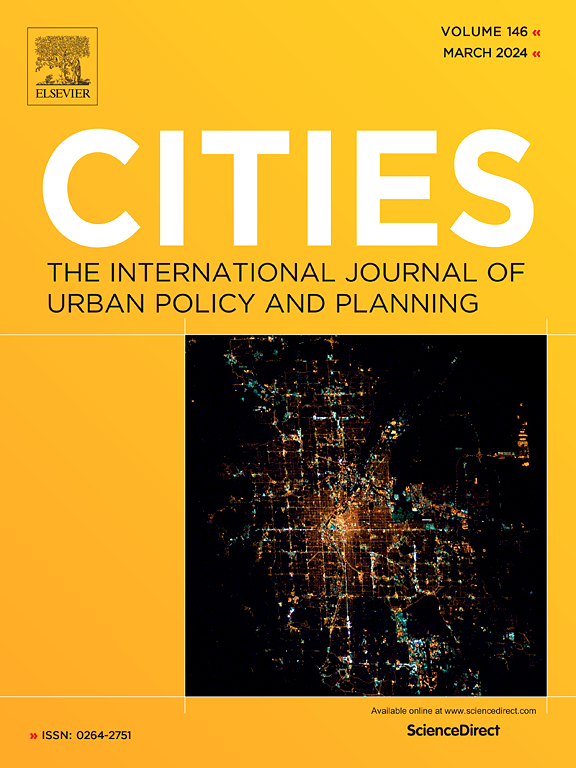Decoding the built environment-behavior nexus at residential boundaries: A multi-dimensional analysis of 85 street segments in Dalian
IF 6.6
1区 经济学
Q1 URBAN STUDIES
引用次数: 0
Abstract
Boundaries in communities often become sites of conflict and “Not In My Backyard” (NIMBY) effects, reducing the efficiency of public space utilization, especially in older residential areas. However, by re-envisioning boundaries as potential public spaces and exploring their interactions with various stakeholders, these negative effects can be mitigated. This study analyzes multi-source data from 85 street segments in Dalian, China, to examine these interactions with the urban environment. A VIM-VDM model was developed to quantify interaction intensity, using two behavioral patterns—traversal and stationary activities—as dependent variables. Through machine learning-based semantic segmentation of street view images, 24 environmental factors across five dimensions were incorporated into a bivariate LOESS regression model to assess their impact on three boundary interaction types. Using Python's OpenCV library, population trajectory maps were generated and targeted strategies for two boundary types—H-type and I-type—were proposed. Results show that increasing entrance density and sidewalk width significantly enhance interactions in Fenced Type boundaries, while shop density, transparency, and seating improve interactions in Building-service Type boundaries. Factors like street length and height-width ratio suppress interactions in Building-life Type boundaries, whereas convex space ratio and build-to-line rate promote them. These findings suggest shifting urban renewal focus from “isolated centers” to “interactive boundaries” to foster shared spaces and resources.
解读居住边界的建筑环境-行为关系——基于大连市85个街道段的多维分析
社区的边界往往成为冲突和“邻避”效应的场所,降低了公共空间的利用效率,特别是在老住宅区。然而,通过将边界重新设想为潜在的公共空间,并探索其与各种利益相关者的互动,可以减轻这些负面影响。本研究分析了来自中国大连85个街道段的多源数据,以检验这些街道与城市环境的相互作用。一个VIM-VDM模型被开发用来量化交互强度,使用两种行为模式-穿越和静止活动-作为因变量。通过基于机器学习的街景图像语义分割,将5个维度的24个环境因素纳入二元黄土回归模型,评估其对3种边界交互类型的影响。利用Python的OpenCV库生成种群轨迹图,并提出了h型和i型两种边界类型的目标策略。结果表明,增加入口密度和人行道宽度可显著增强围栏型边界的交互作用,而增加商店密度、透明度和座位可改善建筑-服务型边界的交互作用。街道长度和高宽比等因素抑制了建筑-生活类型边界的相互作用,而凸空间比和建筑-线率则促进了它们的相互作用。这些发现建议将城市更新的重点从“孤立中心”转向“互动边界”,以促进共享空间和资源。
本文章由计算机程序翻译,如有差异,请以英文原文为准。
求助全文
约1分钟内获得全文
求助全文
来源期刊

Cities
URBAN STUDIES-
CiteScore
11.20
自引率
9.00%
发文量
517
期刊介绍:
Cities offers a comprehensive range of articles on all aspects of urban policy. It provides an international and interdisciplinary platform for the exchange of ideas and information between urban planners and policy makers from national and local government, non-government organizations, academia and consultancy. The primary aims of the journal are to analyse and assess past and present urban development and management as a reflection of effective, ineffective and non-existent planning policies; and the promotion of the implementation of appropriate urban policies in both the developed and the developing world.
 求助内容:
求助内容: 应助结果提醒方式:
应助结果提醒方式:


